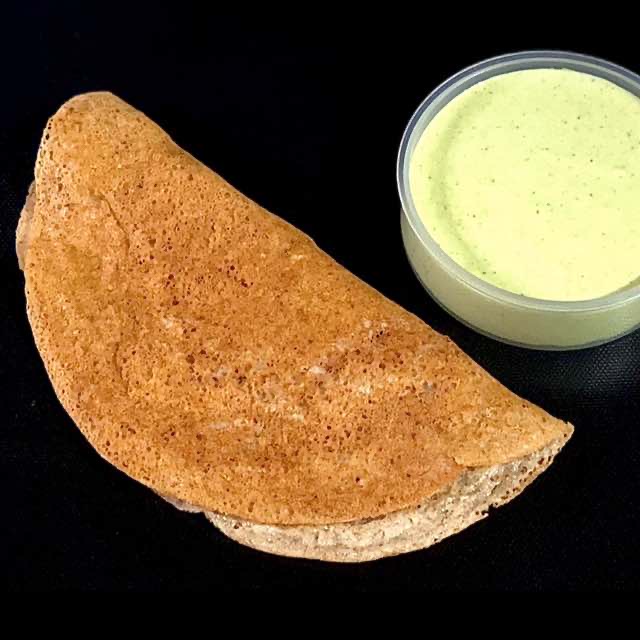This keto dosa is very easy to make and turns out crisp and delicious!
How to make Keto Dosa-Keto breakfast recipes
This keto dosa is made with seeds, nuts, and some cheese. This is very easy to make and pairs very well with chutneys.

Ingredients
Instructions
-
To a grinder jar add almonds, peanuts, sunflower seeds, pumpkin seeds, salt (to taste), oil, cheese, baking soda, lime juice, psyllium husk and 1/2 cup water.
You can use any type of cheese for this recipe. Note that if you use mozzarella cheese, you will not have to add psyllium husk. Mozzarella cheese is stretchy enough to bind the batter together -
Blend to a smooth paste (as smooth as possible)
A non-stick pan is crucial so the dosa doesn’t turn into a sticky mess. -
Add a quarter cup of water to the grinder jar to thin out the batter. The consistency of the batter should be slightly thinner than regular dosa batter
-
To cook the dosa, make sure to use a good quality non-stick pan
-
Don’t turn the heat on as yet and brush the dosa with a little bit of oil.
Do not use too much oil, if not the dosa with have a lot of holes and will be hard to flip -
Add 2 tbsp. of dosa batter on the pan and spread the dosa into a 5-6 inch circle.
Try not to make the dosa big, it could tear when you try to flip it. These dosas are more delicate than regular dosas. -
Turn the heat on to medium, the dosa with take 5-6 min to cook and turn golden brown
After cooking one dosa and before spreading another one, rub a damp cloth on the surface of the pan or hold the pan under running water for a bit till it cools down. It is hard to spread the batter on a hot pan -
Nutrition Facts per serving (from MyFitness Pal)
Servings 8
- Amount Per Serving
- Calories 64kcal
- % Daily Value *
- Total Fat 5.2g8%
- Saturated Fat 1g5%
- Cholesterol 1.9mg1%
- Sodium 32.1mg2%
- Potassium 49mg2%
- Total Carbohydrate 1.9g1%
- Dietary Fiber 1.1g5%
- Sugars 0.3g
- Protein 3g6%
- Vitamin A 0.1 IU
- Calcium 1.4 mg
- Iron 2.3 mg
- Net Carbohydrates 0.8g
* No Added Sugars. The sodium content may vary based on the amount of salt added in the recipe. Percent Daily Values are based on a 2,000 calorie diet. Your daily value may be higher or lower depending on your calorie needs.



